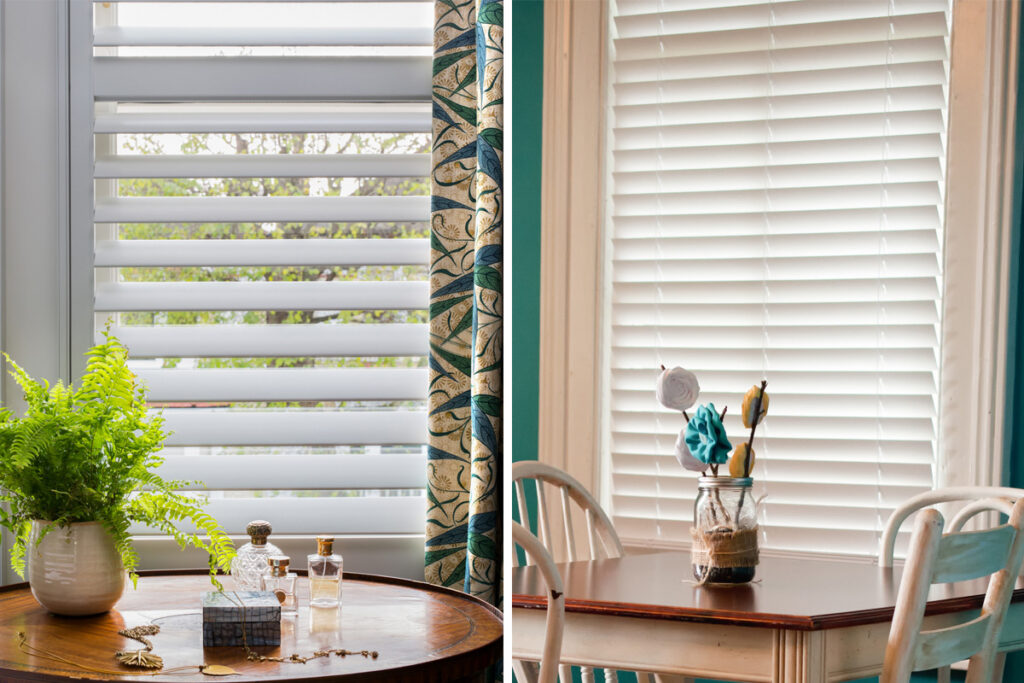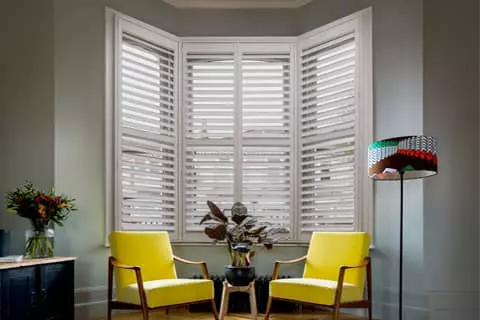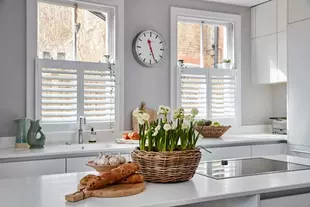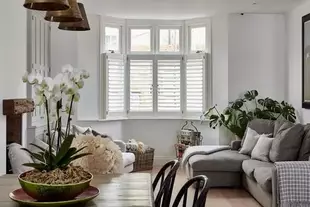There are so many different window dressing choices available for homes today that it can be tricky to know exactly which option offers the perfect combination of benefits and aesthetics for your interiors.
In the early stages of speaking to clients, we commonly come across the phrase ‘shutter blinds’ being mistaken for the broad term ‘shutters’, an entirely different product to blinds. This can cause confusion because blinds are considered the most similar to shutters in appearance and functionality amongst the available alternative dressings on offer. There are many variations between the two and with a little research, the differences becomes clear.
To help differentiate whether shutters or blinds are the best choice for you, we have put together a brief overview of the product differences to ensure your chosen window dressing is the perfect addition to your home and interiors.
Fitting
All shutters are made to measure and are fitted using a three, or four, sided frame. Frames are secured either inside or outside of a window recess depending on the chosen style of shutter and window specifications. The shutters are fixed in place to hug window areas seamlessly whilst still allowing the freedom to open and close the panels or louvres independently.
Blinds on the other hand are secured only at the top of windows with brackets and headrails. The top secured section houses the blind roll, panels, or trolleys for vertical blinds to be clipped in. By being secured only at the top of the window, the bottom and sides of the blind can be susceptible to movement. Consequently, when a breeze picks up through an open window, or if knocked, the blind is more likely to move and hit against surrounding walls and be less effective in blocking the window area.
The movement of the blinds can be worked around in some instances by integrating the blind into a frame. For example, a honeycomb blind can be integrated behind shutter panels (also referred to as a room darkening blind in this instance), where it will be housed in the shutter frame itself.


Operation
Modern shutters almost always have louvres as a standard unless a solid panel style is preferred whereas only a selection of styles (such as venetian blinds) have features that mimic louvres which can limit the benefits on offer. Louvred window dressings allow for varying degrees of light control and privacy levels depending on the tilt choice and air flow can be adjusted to coming into a room with a simple manoeuvre of the angle.
Louvres in shutters are fixed within panels which allows different opening configurations and are controlled either with a rod attached to the front of louvres or through and internal cog mechanism.
Louvres in blinds are held together and operated with a string or chord. To alter the height of the blinds, a separate, yet attached string is pulled which makes the whole blind concertina either up or to the side depending on the style.
Most mid-sized windows will be covered by two shutter panels that are opened and closed by pulling them to open independently, one from each side. In some ways, this is similar to opening double doors. There are many ways different ways that plantation shutters can be configured which is agreed on survey with our experts to ensure the ideal solution for both design preference and window specifications. For example, if there is a wardrobe on one side of the window, panels can be designed to open on the other side of the window to avoid any obstruction. The opening of shutters is also dependent on the chosen style of shutter as some options such as tier on tier mean that panel numbers are doubled up.
Materials
Shutters are made from stronger and longer-lasting materials than blinds. As shutters are custom manufactured to exacting measurements, the complexity of this process means that more specialist teams are involved in the build. Shutters come with a selection of different material options. Our most popular material choices are our entry level Craftwood MDF and Hardwood or Pearlwood timber options, however there are plenty of other options available such as architectural grade aluminium making our security shutter range. Shutters are more durable than blinds however it is always important to ensure that are from a trusted supplier as there are cheaper copies available on the market that are made from PVC or faux wood which can more easily warp or damage. Identifying these copies can usually be identified through cost – if a shutter cost is coming out similar to a blind then it is often an indicator that the material quality is not as it should be.
Blinds are usually made of faux wood, plaswood (plastic and wood) or fabric. Due to the more delicate nature of blind mechanisms, manufacturing in the more robust materials is not usually an option as they would not be supported as shutters are when fixed in numerous sections of the window area.
Styles
Both shutters and blinds have different styles on offer to choose from depending on room requirements your design preferences. Here are some examples of the various shutter and blind styles available for your windows;
|
Shutter Styles |
Blind Styles |
|
Full height with a divider rail |
Roller blinds |
|
Full height without a divider rail |
Venetian blinds |
|
Full height with a hidden break |
Roman blinds |
|
Tier on tier shutters |
Honeycomb/ hive blinds |
|
Cafe style |
Vertical blinds |
|
Solid shutters |
Day and night blinds |
|
|
Panel blinds |
|
|
Pleated blind |
Longevity and Value
Shutters cost more than blinds, but you certainly get what you pay for. Because blinds are not fixed in the same solid, secure way that shutters are, they do not have the same longevity and are often considered to be a shorter term, regularly replaced alternative.
The difference in materials that shutters and blinds are manufactured from can mean that not only do the blinds not last as long, but they also don’t protect your carpet and furniture from fading after long exposure to the harsh UV rays in the way shutters do.
Shutters are very low maintenance to clean as a simple dusting and wipe down is all that is required to keep them in good quality. Shutters are often considered to be a better investment into the home as they are known to add value to properties due to their long-lasting and luxury fitting as well as the aesthetically pleasing curb appeal.
If you believe shutters will make the perfect addition that rooms have been calling out for then Plantation Shutters Ltd are here for you. As we celebrate 40 fabulous years of shutters this year, we are confident both in the quality of shutters we are so proud to offer and also the unmatched skill of our in house team of experts. Although shutters are at the beating heart of all we do, we do supply a range of blinds too do if you decide that a mixture of both shutters and blinds is the ideal combination for your home and interiors then our teams can work with you room by room to add the perfect window dressing to the space.
You can browse our many shutter and blind options and styles in our shutter gallery, call our friendly team of experts on 020 8871 9222 or email one of a friendly team today. Looking for an online quote? Our online quote calculator can provide you with material costs in the early stages of looking into shutters with some basic widths and heights of your windows.





